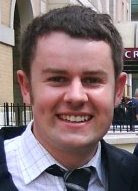Well, I actually started writing this blog two weeks ago, being a little depressive and about to state that things have not got any better out here…but since then things have got a lot better…
A few weeks ago, we went on another site visit to Kurume, to measure the flows at each of the tap stands, and various points along the distribution pipe. Despite a few leaks along the pipe, and the fact that a few of the tap stands were not working (as the pipes had been damaged by the erosion of the road due to the incessant rains), the flow throughout the system was generally good, and sufficient. On a site visit a few weeks later, the villagers showed us that they have a lot more working tap stands than we had previously been led to believe. They are all classed as private connections, but there are at least nine of them!
On this site visit, we also got to visit the other villages which we would planning to provide water to: Ndoi, Ngolo Bolo, and Konye town itself. These visits proved more than interesting:
Ndoi
Ndoi has one India Mark II pump, used only for washing and not for drinking, as the water quality is poor. It also has one tapstand, with water constantly coming out due to there being no pressure in the pipes. This does supply a small amount of water during the dry season, but the villagers also have to rely on water from a small stream, and a stream 1.5km across a large river.
Ngolo Bolo

During the rainy season, there is an adequate water supply from a small waterfall – but this dries up for 5 months of the year, meaning the villagers have to wait in even longer queues or cross the river to get water. There is a well system, but this water is contaminated. Ngolo Bolo has the densest population, so when illness strikes, it does so badly here.
Konye

OSRI

So, following a visit to OSRI’s offices, we have now relocated to working with them. They have a file with substantial information about the Konye project, which we have been working through - the aim will be to update this, with a view of getting phased funding opportunities to allow it to be constructed. They also have many other projects which we are interested in working on! So things are now getting better…
We have also started working on the side with a charity called the Rural Health Foundation, and will soon be going on a visit to a village called Matoh to investigate why a system installed there failed after a year.
So, things are starting to look up…!

No comments:
Post a Comment